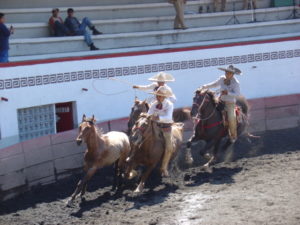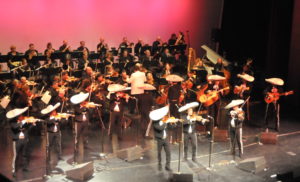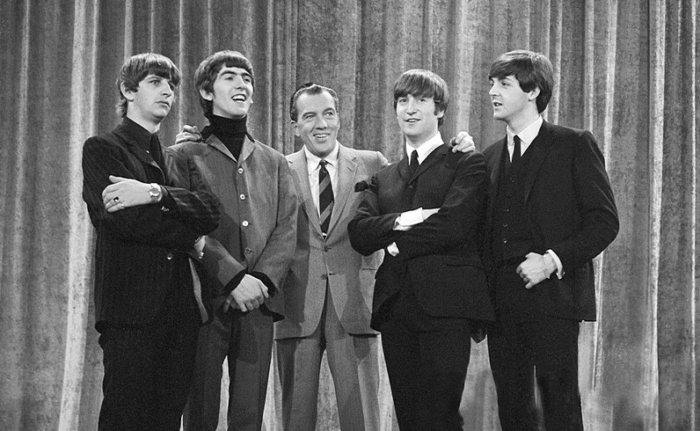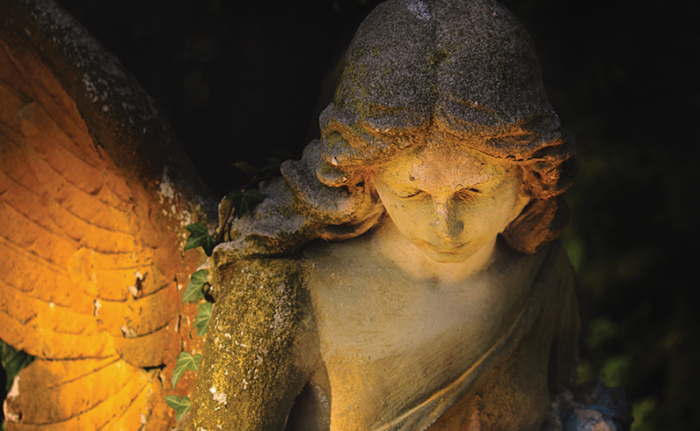This post is continued from a previous post, which you can read here.
Last time, we discovered the Jaliscan origins of Mariachi music and the economic and social forces of industrialization and revolution that transformed the sound of Mariachi. The evolution of Mariachi music was far from complete, however; the plain clothes and humble status of Mariachi musicians would make performances from this period hard to recognize for audiences today. As the history of Mexico progressed, so too did that of the Mariachi tradition.

During the post-revolutionary period the image of Mariachi ensembles began to take on its modern form. The colorful clothes of Mariachi ensembles today come from charros, the charreada, and early twentieth century Mexican cinema. Charros were Mexican cowboys who could perform amazing feats at charreadas, special rodeos with events like bull wrestling and jumping onto wild mares from the backs of running horses (known as the “Pass of Death,” some show-offs liked to do this trick backwards). Deserved or not, Charros became known for their flamboyant sartorial choices, macho attitudes, hard drinking, and womanizing. Unsurprisingly, charro-themed films became popular in Mexico, and the music chosen to symbolize the swashbuckling charro lifestyle was Mariachi. Henceforth, Mariachi ensembles began to adopt the dazzling charro style costumes we are familiar with today.
Although the Mexican Revolution officially ended in 1920, unrest continued to flare up during the following decade, and as the years progressed the new leaders of Mexico became eager to forge a strong sense of nationalism and to create a Mexican culture that would unite the entire country. They seized upon the increasingly popular Mariachi music as the musical glue that would hold Mexico together and began funding cultural projects to record and broadcast Mariachi throughout Mexico and the world. Mariachi ensembles became increasingly professional and technically accomplished, and Mariachi as the official music of Mexico was born.

The next time you hear Mariachi music, remember that this tradition isn’t just the aural equivalent of a postcard from Mexico. These songs are full of the sorrows and joys of generations, and reflect the dynamic history and culture of an ancient and fascinating country. The charreadas, the charros and Mariachi music no doubt appeal to nostalgia for a simpler time that, upon reflection, likely never existed. These songs embody the passions and yearnings of an entire people, universal emotions we can all relate to.
Since its mid-century rise to fame, Mariachi music has continued to evolve and transform itself as it has come into contact with new influences and spread throughout the world. Artists like Lola Betran and Lucha Villa gave the traditionally masculine genre powerful female voices and perspectives, and Mariachi music is now widely taught throughout schools in the United States. This Friday, Mariachi Cobre, one of today’s leading Mariachi ensembles, will continue this tradition of experimentation and innovation by performing a one-night-only concert with the Houston Symphony led by conductor Stuart Chafetz in what is sure to be an exhilarating evening that will take this music to places its first performers could only have dreamed of.
To purchase tickets for Mariachi Cobre, click here.
Sources



